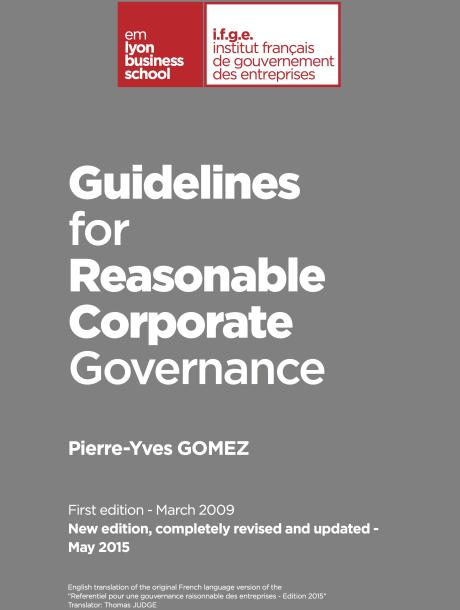
This code was produced by: French Corporate Governance Institute
The preceding version of the “Guidelines for reasonable corporate governance” ended with the following remark: “This first version of the guidelines will provide a starting point for working towards more consistent corporate governance practices in France, and will benefit from feedback and proposals from its users to improve the relevance and efficiency of future versions.” Those guidelines provided the foundations for the MiddleNext corporate governance code that represents its direct application. This text has been explored in-depth by hundreds of companies. Others have used it to assess their governance. Academic colleagues have offered comments. After five years of discussions, analysis and feedback from users, the original version of these guidelines now needs to be updated by introducing fine-tuned adjustments and improvements.
These changes concern neither the spirit, the logic, nor the major principles established by the 2009 edition that we consider as the foundation for reasonable governance. In contrast, definitions for certain concepts have been introduced along with more detailed explanations of the logical construction and reasoning underpinning these guidelines. However, what matters most is that it is used by governance stakeholders, irrespective of the nature or size of their companies, and that it is capable of being adapted to their specific history, circumstances and needs.
In the first part, we in consequence expand upon certain definitions and notions, such as creating confidence, which are critical to understanding the impact of reasonable governance on companies. In the second part, presenting the three powers of corporate governance (sovereign, executive, supervisory), we introduce new developments and analytical tools for better understanding the multiple realities of companies. This is accompanied by new points of vigilance that have been introduced based on feedback from users of the preceding version. Finally, the third part has been enhanced in order to o er a better definition of six corporate governance frameworks (versus five previously), indicating both the benefits and risks associated with each, along with recommendations for limiting these risks.
In the spirit of the previous version, these guidelines constitute a toolbox to assist governance stakeholders (managers, directors, shareholders, analysts, investors, consultants and experts) in producing their own analysis and assessments. This is the very essence of “reasonable governance” whose sole purpose is to promote growth in situational knowledge. That is why we already know that a future version will be further enhanced by contributors who are the users of these guidelines.
Pierre-Yves Gomez May 2015
These changes concern neither the spirit, the logic, nor the major principles established by the 2009 edition that we consider as the foundation for reasonable governance. In contrast, definitions for certain concepts have been introduced along with more detailed explanations of the logical construction and reasoning underpinning these guidelines. However, what matters most is that it is used by governance stakeholders, irrespective of the nature or size of their companies, and that it is capable of being adapted to their specific history, circumstances and needs.
In the first part, we in consequence expand upon certain definitions and notions, such as creating confidence, which are critical to understanding the impact of reasonable governance on companies. In the second part, presenting the three powers of corporate governance (sovereign, executive, supervisory), we introduce new developments and analytical tools for better understanding the multiple realities of companies. This is accompanied by new points of vigilance that have been introduced based on feedback from users of the preceding version. Finally, the third part has been enhanced in order to o er a better definition of six corporate governance frameworks (versus five previously), indicating both the benefits and risks associated with each, along with recommendations for limiting these risks.
In the spirit of the previous version, these guidelines constitute a toolbox to assist governance stakeholders (managers, directors, shareholders, analysts, investors, consultants and experts) in producing their own analysis and assessments. This is the very essence of “reasonable governance” whose sole purpose is to promote growth in situational knowledge. That is why we already know that a future version will be further enhanced by contributors who are the users of these guidelines.
Pierre-Yves Gomez May 2015







